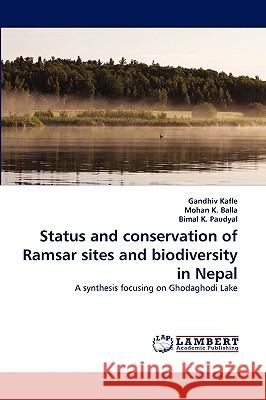Status and conservation of Ramsar sites and biodiversity in Nepal » książka
Status and conservation of Ramsar sites and biodiversity in Nepal
ISBN-13: 9783838369471 / Angielski / Miękka / 2010 / 104 str.
Status and conservation of Ramsar sites and biodiversity in Nepal
ISBN-13: 9783838369471 / Angielski / Miękka / 2010 / 104 str.
(netto: 208,74 VAT: 5%)
Najniższa cena z 30 dni: 219,69
ok. 10-14 dni roboczych
Bez gwarancji dostawy przed świętami
Darmowa dostawa!
Ramsar sites of Nepal are reservoir of biodiversity and source of livelihood for many communities. Ramsar sites and associated biodiversity are plagued with multitude of problems caused by natural and anthropogenic factors: overuse of resources, proliferation of alien invasive species, encroachment, wildlife killing, chemical input, erosion, sedimentation, limited scientific research, lack of management planning and low level of conservation awareness among local people. National Wetlands Policy has been formulated addressing need for an integrated and coordinated approach to wetlands management and conservation. Conservation efforts are ongoing at local, regional and national level. However, the lack of sole institution for wetlands management and their overlapping responsibilities have created dilemma in conservation. This book provides a systematic synthesis of status and conservation of Ramsar sites in Nepal with emphasis on Ghodaghodi lake area.
Ramsar sites of Nepal are reservoir of biodiversity and source of livelihood for many communities. Ramsar sites and associated biodiversity are plagued with multitude of problems caused by natural and anthropogenic factors: overuse of resources, proliferation of alien invasive species, encroachment, wildlife killing, chemical input, erosion, sedimentation, limited scientific research, lack of management planning and low level of conservation awareness among local people. National Wetlands Policy has been formulated addressing need for an integrated and coordinated approach to wetlands management and conservation. Conservation efforts are ongoing at local, regional and national level. However, the lack of sole institution for wetlands management and their overlapping responsibilities have created dilemma in conservation. This book provides a systematic synthesis of status and conservation of Ramsar sites in Nepal with emphasis on Ghodaghodi lake area.











